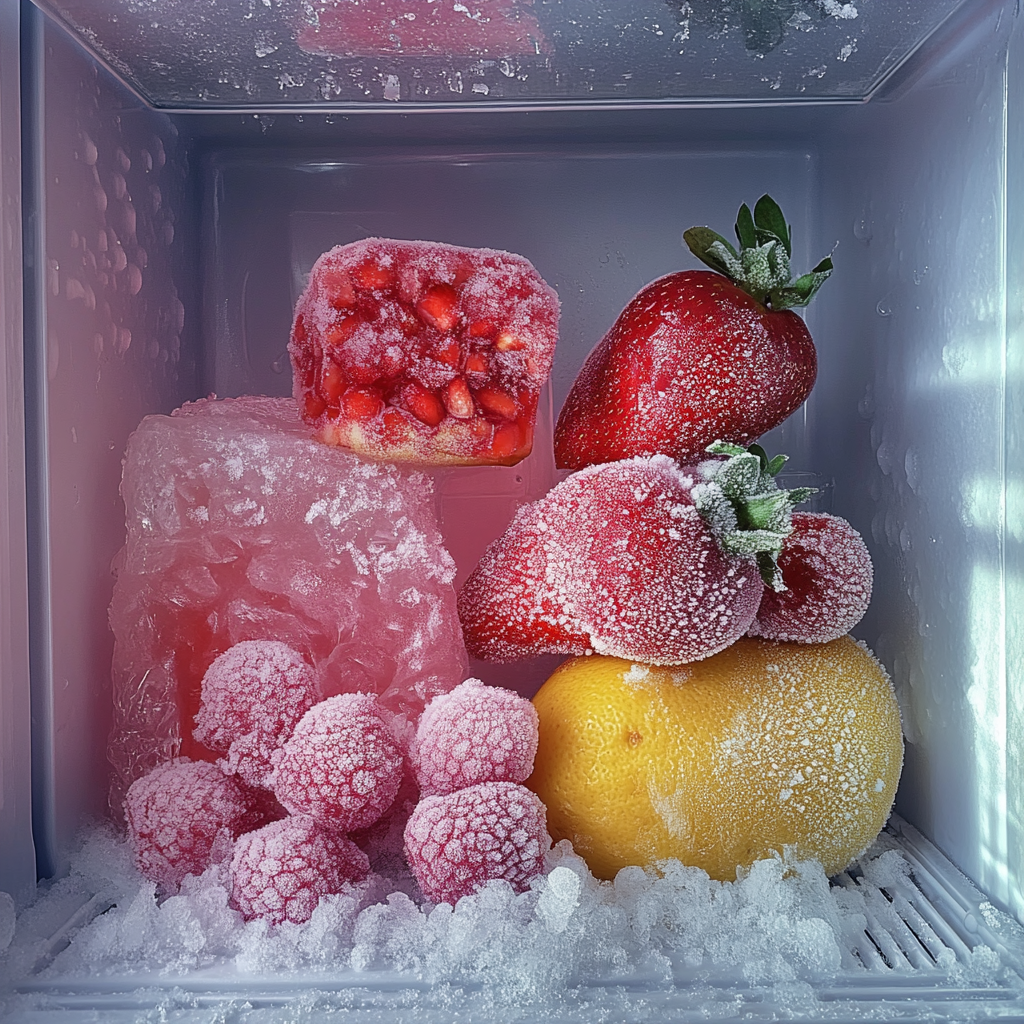Introduction to Ice Cream Makers

Ice cream makers are an essential tool for anyone who loves creating frozen desserts at home. These versatile machines simplify the process of turning basic ingredients into rich, creamy ice cream, sorbets, gelato, and more. Whether you’re experimenting with unique flavors, catering to dietary preferences, or simply enjoying a hands-on culinary experience, an ice cream maker allows you to take control of every aspect of your frozen treats. during this article we will answer the following Quetion: How long do I need to freeze my ice cream maker?
There are various types of ice cream makers available, each catering to different needs and levels of expertise. From compact models with freezer bowls to professional-grade compressor machines, there’s an option for everyone. Some models even cater to nostalgic cravings, like traditional hand-cranked devices, perfect for old-fashioned recipes.
Understanding how these machines work, the types available, and the best practices for using them ensures you get the most out of your investment. Whether you’re a novice or an experienced dessert maker, mastering your ice cream maker unlocks endless possibilities for crafting sweet delights tailored to your taste.
In this guide, we’ll delve into the types of ice cream makers, their functionality, and tips for achieving perfect results, so you can elevate your dessert-making experience.
Understanding the Freezing Process
Freezing is a crucial step in making perfect homemade ice cream. It determines the texture, consistency, and overall quality of your frozen dessert. Whether you’re using a Ninja Creami, a Cuisinart freezer bowl, or a traditional salt-and-ice machine, understanding how freezing works can help you achieve the best results every time.
Why Freezing Time Matters
The freezing time directly impacts the ability of your ice cream maker to churn and solidify the mixture effectively. A properly frozen bowl or base ensures:
- Smooth Texture: Prevents the formation of large ice crystals, giving your ice cream a creamy consistency.
- Efficient Churning: A fully frozen bowl can maintain the cold temperatures required to churn the mixture properly.
- Even Freezing: Ensures the entire base solidifies uniformly, avoiding grainy or icy patches.
For insights on why freezing duration is critical for specific models, such as the Ninja Creami, explore this guide on why the Creami requires 24 hours to freeze.
Factors Influencing Freezing Time
Several factors can influence how long it takes to freeze your ice cream maker’s bowl or base. Paying attention to these variables can help you optimize the process for your specific machine.
Room Temperature
The ambient temperature in your kitchen can impact the time it takes for your freezer and ice cream maker bowl to reach optimal freezing conditions:
- A warmer room temperature may cause the freezer to work harder, slowing down the freezing process.
- To counteract this, ensure your freezer is well-ventilated and not exposed to heat sources like ovens or direct sunlight.
For recipes that require quick preparation, consider storing your freezer bowl in advance, as suggested in this Ninja Creami recipes guide.
Freezer Settings
The settings and efficiency of your freezer play a vital role in freezing times:
- Optimal Temperature: Set your freezer to 0°F (-18°C) or lower to ensure rapid and thorough freezing.
- Freezer Placement: Place the bowl in the back of the freezer where the temperature is most stable.
- Minimize Door Openings: Limit the frequency of opening the freezer to maintain a consistent temperature.
To maximize freezer performance and reduce freezing time, check out these tips for efficient freezer use.
Ice Cream Maker Model
Different ice cream makers have unique freezing requirements based on their design and functionality:
- Compressor-Based Models: These do not require pre-freezing and can churn ice cream instantly. They are perfect for frequent use.
- Freezer Bowl Models: Require 12–24 hours of freezing before use. Ensure the bowl is completely frozen before starting.
- Traditional Salt and Ice Machines: These rely on salt and ice for freezing and don’t require pre-frozen bowls.
For specific freezing guidelines tailored to Cuisinart models, check out this article on making perfect ice cream in a Cuisinart.
Why Freezing Time Matters

Freezing time is critical because it determines how effectively your ice cream maker can churn and solidify the base. Most freezer-bowl ice cream makers require at least 12–24 hours of freezing to achieve the proper consistency. For a more thorough breakdown of the importance of freezing time, explore this resource on why the Ninja Creami needs 24 hours to freeze.
Different ice cream makers have unique freezing requirements, but the goal is the same: a fully frozen bowl ensures smooth churning and even texture.
Types of Ice Cream Makers and Their Freezing Needs
Not all ice cream makers operate the same way. Here’s a breakdown of the most common types:
- Compressor-Based Ice Cream Makers
- These machines have built-in freezers and do not require pre-freezing.
- They are ideal for those who make multiple batches or frequently experiment with recipes.
- Freezer Bowl Models
- Require the bowl to be frozen solid for at least 12–24 hours.
- Ensure your freezer is set to 0°F (-18°C) or lower for the best results.
- For specific recipe inspirations, explore these Ninja Creami recipes.
- Traditional Salt and Ice Machines
- Do not require pre-freezing but rely on layers of salt and ice for the freezing process.
- Suitable for those with limited freezer space.
- Hand-Cranked Machines
- Use a similar salt-and-ice method, requiring consistent manual effort.
Each type has unique pros and cons, but freezer bowl models are the most common for home use.
How to Properly Freeze Your Ice Cream Maker Bowl
To get the best results from your freezer bowl ice cream maker, follow these steps:
- Set the Freezer Temperature
- Ensure your freezer is set to 0°F (-18°C) or colder.
- Place the bowl at the back of the freezer, where the temperature is most stable.
- Pre-Chill Your Mixture
- Refrigerate your ice cream base for 2–4 hours before pouring it into the frozen bowl. This step speeds up the churning process and improves texture.
- Leave Space in the Freezer
- Avoid overcrowding the freezer. Allow airflow around the bowl for consistent freezing.
For additional dessert ideas that pair perfectly with homemade ice cream, try this creme brulee recipe.
Common Mistakes and How to Avoid Them
Freezing your ice cream maker correctly is essential for achieving smooth and creamy results. However, common mistakes can hinder the process and affect the quality of your dessert. Here’s a guide to the most frequent errors and how to avoid them.
Not Freezing the Bowl Long Enough
One of the most common mistakes is under-freezing the bowl. A partially frozen bowl won’t be cold enough to churn the mixture properly, resulting in slushy or icy ice cream.
– How to Avoid This Mistake
- Follow Recommended Freezing Times: Most freezer bowls require 12–24 hours of freezing at 0°F (-18°C) or lower. Consult your ice cream maker’s manual for specific instructions.
- Check for Readiness: Ensure the bowl feels rock-solid to the touch and has no liquid sloshing inside. A frosty exterior is a good indicator.
- Pre-Plan Freezing: Place the bowl in the freezer the night before you plan to make ice cream to ensure it’s fully frozen.
For additional tips on ensuring proper freezing, explore this detailed guide on how long to freeze your ice cream maker.
Overcrowding the Freezer
Overloading your freezer with items can restrict airflow and prevent the bowl from freezing evenly. This can lead to uneven churning and an inconsistent texture in your ice cream.
– How to Avoid This Mistake
- Create Space Around the Bowl: Place the freezer bowl in a spacious area with good airflow. Avoid stacking items around it.
- Organize Your Freezer: Keep commonly accessed items closer to the door and your ice cream maker bowl at the back where the temperature is most stable.
- Limit Door Openings: Frequent openings can cause temperature fluctuations, slowing down the freezing process.
Proper organization and spacing can significantly improve freezing efficiency, ensuring your bowl is ready when you need it.
FAQs: How long do I need to freeze my ice cream maker?
How Long Should I Freeze My Ice Cream Maker?
The freezing time for your ice cream maker depends on the type of machine you’re using. For most freezer bowl ice cream makers, the bowl should be frozen solid for 12–24 hours at a temperature of 0°F (-18°C) or lower. This ensures the bowl is adequately frozen to churn your ice cream mixture effectively.
If you’re using a compressor-based ice cream maker, there’s no need to pre-freeze as it has a built-in freezing mechanism. For additional tips on freezing and preparation, explore these Ninja Creami recipes for inspiration.
How Long Do You Really Need to Freeze Creami?
The Ninja Creami user manual recommends freezing your base for a full 24 hours. This ensures the base is completely solid and ready for the machine to process. While some users experiment with shorter freezing times, like 12–15 hours, the results can vary. Using a base that isn’t fully frozen may lead to a softer texture or uneven blending.
For a detailed breakdown of the 24-hour freezing rule and why it matters, check out this guide on how long Creami bases should freeze.
How Long Does It Take to Freeze a Cuisinart Ice Cream Maker Bowl?
Cuisinart freezer bowls generally require 16–24 hours of freezing at 0°F (-18°C) or colder to reach the optimal temperature. To test if the bowl is ready, shake it gently—if you hear liquid sloshing inside, it needs more time to freeze.
To avoid delays during your ice cream-making process, consider keeping your freezer bowl stored in the freezer so it’s always ready to use. For recipe ideas compatible with Cuisinart machines, try these homemade dessert recipes.
How Long Does It Take to Make Ice Cream in an Ice Cream Maker?
The time required to make ice cream in an ice cream maker depends on the type of machine and recipe:
- Freezer Bowl Models: Typically take 20–40 minutes to churn once the bowl is fully frozen.
- Compressor-Based Machines: Can churn ice cream in as little as 15–25 minutes.
- Traditional Salt and Ice Machines: May take 30–45 minutes, depending on the recipe and ice layering.
After churning, the ice cream may be soft-serve consistency. For a firmer texture, transfer it to a container and freeze it for 3–4 hours. For ideas to complement your ice cream creations, try pairing it with this creme brulee recipe.
Conclusion
Freezing your ice cream maker bowl properly is the foundation for creating delicious homemade ice cream. While it may require patience, adhering to the correct freezing time ensures smooth, creamy results. Whether you’re using a freezer bowl or a compressor-based machine, the right preparation makes all the difference.
For more tips and recipe ideas to elevate your dessert-making, explore Ninja Creami recipes or try something unique like this creme brulee recipe. With the right techniques, you’ll master the art of homemade ice cream in no time!

